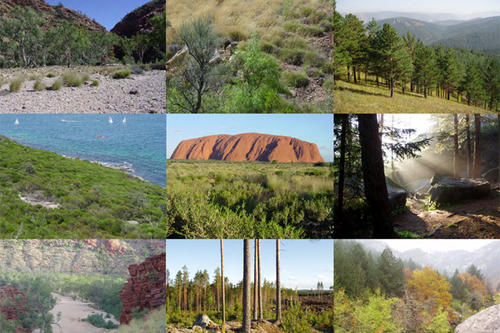
The world's first global vegetation community database—which contains complete lists of plant species sampled across more than 1.1 million plot acres across all of Earth’s ecosystems— aims to help better predict the consequences of global climate change.
University of Minnesota Professor Peter Reich is a co-author of the new study published in Nature Ecology & Evolution on global trait-environment relationships of plant communities. The team also included researchers at Martin Luther University Halle-Wittenberg (MLU) and the German Centre for Integrative Biodiversity Research (iDiv) Halle-Jena-Leipzig.
“Scientists need to be cleverer in predicting future communities in the face of climate change than previously thought, and data sets like this one help us along that path,” said Reich, a professor at the University of Minnesota College of Food, Agricultural and Natural Resource Sciences Department of Forest Resources. “Prior research has taught us how and why individual plant species might be found where they are; this new study enables us to do the same for entire communities.”
The research group combined this massive dataset with the world's largest database for plant traits called TRY, which Reich also helped develop. The combined data sets enabled researchers to answer questions never tackled before, such as: to what extent do global factors influence the functional traits of plant communities, or the kinds of plants that might grow together in a mixture?
“Plants almost always live together in communities, competing with each other but also facilitating each others health and well-being,” said Reich. “Understanding plants within communities is crucial to developing a more holistic science.”
Contrary to previous thinking suggesting precipitation levels play the biggest role in determining functional traits of plant communities, new research says these traits are actually determined by factors that vary locally, such as soils, natural disturbances (e.g. wildfire), and land use, as well as by drivers such as growing season temperature and water loss that vary more predictably across the globe.
Ultimately, the findings will help formulate future predictions of vegetation in regions which cannot be made using models based solely on simple temperature and precipitation averages.
“This represents a major step forward in understanding how plant communities vary globally, and an even bigger step in our ability to quantify those communities,” said Reich.
About the College of Food, Agricultural and Natural Resource Sciences
The University of Minnesota College of Food, Agricultural and Natural Resource Sciences brings science-driven innovators together to discover hands-on solutions to global challenges. With ten research and outreach centers across Minnesota, the Minnesota Landscape Arboretum and the Bell Museum of Natural History, CFANS offers unparalleled experiential learning opportunities for students and the community. Learn more at cfans.umn.edu.
Media note:
The University of Minnesota Twin Cities is equipped with a VideoLink ReadyCam® studio for live or taped HD television interviews with our experts. To arrange an interview, contact the University Public Relations at (612) 624-5551 or [email protected].
- Categories:
- Science and Technology





